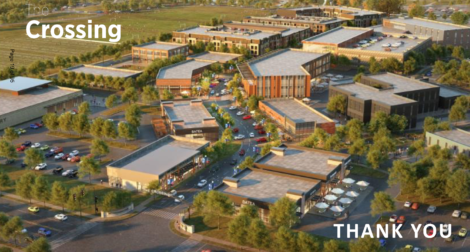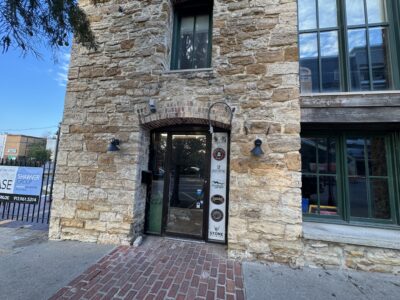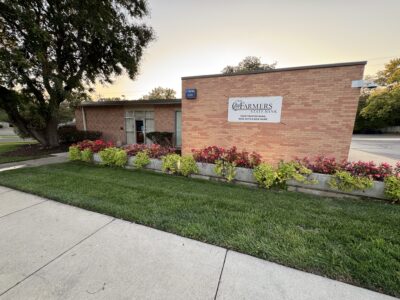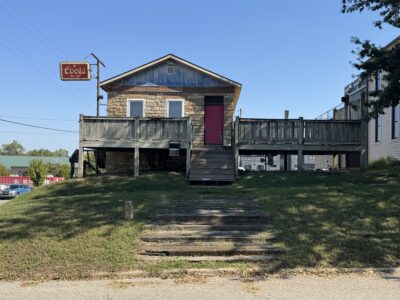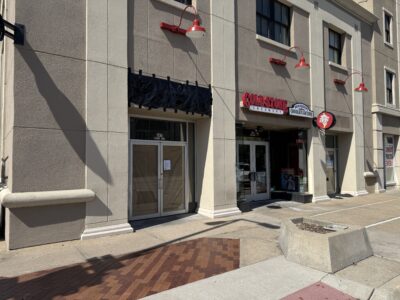
Retail spending in both Lawrence and across the state fell during July, latest report shows
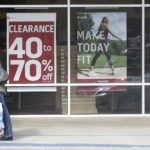
With purchases in hand, a shopper walks past a store advertising clearance sales Thursday in Tallahassee, Fla. in this 2009 file photo.
There were a few more duds than dollars during this year’s July 4 celebrations, if the latest retail sales numbers for the state are any indication.
Retail sales were down both in Lawrence and statewide for the latest reporting period, which covered from about mid-June to mid-July.
Of course, I have no idea whether a decline in firework sales actually contributed to a downturn with the recent numbers. The state reporting system doesn’t work that way. I do know that at the July 4 party I attended, there were fewer fireworks and more grumbling about prices than usual. (I’d estimate our display only left a two-foot deep hole in the yard instead of the normal four feet.)
While it would be nice to understand the “why” of sales tax numbers, the important thing to know is the “how much.” That’s because many local governments rely heavily on sales tax collections to fund their basic operations. In Lawrence, sales tax revenues are the single largest funding source for general operations.
With that in mind, this most recent report wasn’t welcome news for Lawrence. The city is trying to finish the year with at least 5% growth in comparable sales taxes revenues from a year ago. That’s the number the city had as part of its original budget, and generally has been the benchmark the city has counted on to fund capital improvements and other such items. For most of the year, the city has been below that 5% mark, but recently had seen a surge that got it close to that number.
But, with the most recent results, the city now is at 3.8% growth for the year. On a positive note, Lawrence is faring better than the statewide average, and continues to be ahead of about half the major retail communities we track. Here’s a look at those year-to-date figures.
• Manhattan: up 5.1%
• Merriam: up 4.8%
• Salina: up 4.3%
• Sedgwick County: up 4.1%
• Lawrence: up 3.8%
• Topeka: up 2.8%
• Olathe: up 2.5%
• Shawnee: up 1.1%
• Lenexa: up 0.7%
• Kansas City: up 0.6%
• Statewide: up 3.2%
That also is the best that you can say for Lawrence’s one-month results: They were better than the state as a whole, and were particularly better than most of our neighbors in Kansas City. Here’s a look at those one-month totals:
• Salina: up 7.7%
• Manhattan: up 3.7%
• Shawnee: up 0.9%
• Lenexa: up 0.6%
• Sedgwick County: up 0.1%
• Topeka: up less than 0.1%
• Lawrence: down 1.4%
• Olathe: down 2.8%
• Kansas City: down 5.5%
• Merriam: down 7.9%
• Statewide: down 3.6%
The one month totals are interesting also because they showed a little bit of an east versus west split. The only two communities that posted any notable growth for the month were west of Topeka — Manhattan and Salina — while the worst performers were all in the KC metro area.
One month’s worth of results are far from a trend, but it will interesting to watch the numbers close out the year. Obviously there is a lot of national discussion about whether the economy is weakening, and whether the Federal Reserve needs to be cutting interest rates to spur the economy rather than worrying about inflation.
I’m skeptical that my monthly sales tax reports are high on the reading list for the Federal Reserve governors, but the numbers might give all of us a bit of a clue about the direction and pace of the economy. The Kansas City metro area is the largest part of Kansas’ consumer economy, and if we continue to see additional months where the Kansas City communities are the worst performers, I think that would be a sign that the national consumer economy also is weakening.


